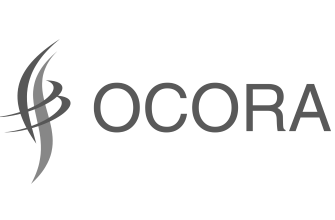The five beliefs we need to sway in any change implementation
Organisational change is such a challenge to many who are trying to implement it that they are completely lost as to where to even begin. If one reads the existing literature and opinions of professionals then this first step becomes even more daunting, because there is little consensus on how to be best approach the task.
One must have the right communication, one must convince the recipients of the change (of what exactly is often unclear), one must build a team of change sponsors, one must convince the executive team of the approach taken, and so on, and so on. But how are these things achieved?
What is it that bring people along with the change, creates the much-needed readiness and avoids the naturally occurring resistance to linger? One thing all change practitioners agree on is that communication is imperative; but what exactly do we need to communicate?
The answer: The change messages must contain the information needed by employees to form positive, change related beliefs! In fact, many change agents target at least some of these beliefs in their varying approaches. These five fundamental beliefs must be addressed to give your change implementation the best possible chance of success. Therefore, the best communication must address these vital beliefs of the employees. The first two beliefs are based on the collective, “we” thinking of employees, the other three on the even more important “I-believe”.
We need to change:
If an employee does not understand why the change is undertaken then they are certain to resist. All people are creatures of habit and have found their comfort zone within their occupation. In this zone they are confident that they can achieve their tasks, they know how to react to challenges and they understand why things are done the way they are.
If they are now being told that, from tomorrow on we will do things differently, then that is seen as a threat to their (professional) existence. People, therefore, must be convinced that the change is absolutely essential to continue their (and their company’s) long term existence and prosperity. They must believe the change is necessary.
We are going the right way about it:
So, now we know why we need to change but are we implementing the right measures to overcome the crisis we are faced with? How does a new software system overcome our slump in sales –does this make sense? And if so, how? Here, it is important to provide the communication that will explain why one particular approach was taken over others. However, not everyone has an in-depth understanding on how organisations function or why a new strategy is better than the previous one. What even is a business strategy?
In this stage two-way communication becomes imperative. There is little use of elaborate business talk if the process workers don’t understand how the new ways of working will improve their working lives. Employees, including managers, must be given the opportunity to ask questions, to understand in their terms why the chosen path is the best.
I will be able to perform the new tasks:
There is nothing more frightening than the uncertainty of what the future will bring. Proper and plenty of communication has now brought the points across that we need to change and we are going the right way about it, but what does that mean for me? How exactly will my job change? What are the new things I need to do to perform, and to perform well? Do I have the skills, or, if not, will I receive all the required training that I need to handle the new ways of working?
I need to believe that I have all skills and competencies to perform my new role or I will not be in favour of the change because I will not perform well.
I will receive the support I need:
I understand now that, given the right training and opportunities to learn my new responsibilities, I will perform well. Do I believe that my managers will provide this for me? Do my managers believe in this change and understand what is required for me to perform well in the new organisation we are creating? Will there be all the resources needed to implement the change? Is the time plan realistic and achievable?
If the change leaders do not “walk the talk” then it will be difficult for all employees to see why they should change if not even their leaders appear to believe in what needs to be done. Once more, dialogue is needed to ensure that employees are heard and it is understood what they think they need to succeed.
I will benefit from this change:
This is by far the most important of all the beliefs that need to be addressed. If the recipients of the change can’t see any benefit coming out of the transformation, then why should they support the change? How will all their efforts be rewarded? This is often the hardest part of the communication strategy, in particular when it is difficult to identify any potential rewards for the members of the organisation.
What is important here is to understand what represents a real benefit for the employees. Not everyone has the same motivations to come to work, and what the communicators of the change think is a great outcome will not necessarily mean the same for all the employees. People’s values must be understood to appropriately address these questions (but that is a story for another day).
How do I measure these beliefs?
So, now we know what is important to be communicated but, once again, what the change leaders think their messages say and what employees understand might be completely different things. How do I know that my communication strategy has the desired effect of addressing these five important beliefs? Armenakis and colleagues have developed the Organisational Change Recipients Beliefs Scale (OCRBS), and this is an excellent tool to measure where employees’ beliefs are at.
The OCRBS is a simple questionnaire that easily identifies how successful our communication addresses the beliefs of the employees. And, maybe more importantly, by showing where the beliefs have not been addressed, exposes the gaps in our communication that we need to concentrate on.
At OCORA we take this proactive approach to ensure we develop the right communication for any change that is implemented. Please contact us to discuss how we can tailor this tool to your change.

